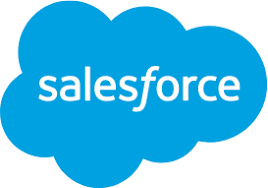
Sponsored by

Despite the tremendous amount of disruption in higher education, we’re seeing new business models emerge, increased speed and agility, and innovative ways to continuously connect like never before. Indeed, it seems a stronger, more agile, and more
strategic university model is rising above the COVID-19 crisis. That’s the definition of the “new university” in this newly released white paper bundle from prominent higher education thought leader Jeff Selingo.
In its six chapters, "The New U" details how institutions differentiate themselves with new business models and why creating a technology-enabled, integrated, customized, and continuous experience throughout the learner lifecycle is critical. In addition,
the New U explores various facets of a connected college experience, including the following:
The Age of Continuous Connections in Higher Education: In this introductory chapter, Selingo shares the four simultaneous forces pressuring campus leaders to try something different. Among others, demographics are shifting, and students are coming
to higher education with more wide-ranging aspirations than ever before.
Harnessing Data to Develop an Integrated Marketing Strategy: Selingo and his co-writer, Terry Flannery, discuss how a growing number of higher education institutions are taking cues from other sectors of the economy in their approach to marketing.
It explores how some of the most advanced marketing operations in higher education — including those at Purdue, Southern New Hampshire, Western Michigan, and Baylor — use data-driven insights to help establish a foundation for
institutional strategy.
The Key Role of Faculty in Designing the Student-Centered University: The increasing emphasis on student success has ushered in far-ranging campus innovations, all in the name of making universities more student-centered. While completion rates
remain low, they are no longer in decline –– and have risen slightly in the last decade. It’s imperative that institutions continue to make student success a priority. Doing that will require a change in strategy.
Developing Differentiated Models for Uncertain Times: The COVID-19 pandemic has exposed the shortcomings of higher education’s standard model. It’s difficult to differentiate one institution’s brand from another’s when
everyone is at home learning online. The pandemic has also wreaked havoc on institutional budgets, revealing the need for schools to have diversified revenue streams. In this chapter, Selingo shares how some institutions are diversifying their
revenue models.
Recruiting and Engaging Gen Z: While colleges compete with each other by emphasizing their differences, there is often uniformity in how they recruit students. In the spring of 2020, admissions offices quickly pivoted most of their activities
online. This chapter examines how some universities pivoted to recruit and engage Gen Z.
Engaging Lifelong Relationships: The old model of higher education, where students interacted with a college during a specific time in their lives, no longer applies in an age when institutions want to build deeper ties with alumni. Today, building
affinity means forging a lifetime commitment to students throughout their learning journey.
Read The New U to learn how institutions are tackling the digital imperative, including the following ways:
Harnessing data to develop an integrated marketing strategy
Adopting new business models to account for future needs
How faculty play a role in designing the student experience
Download The New U.